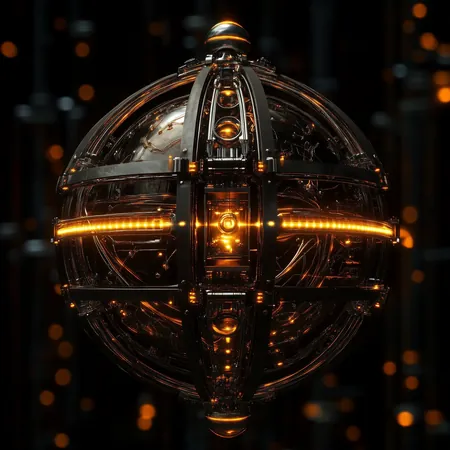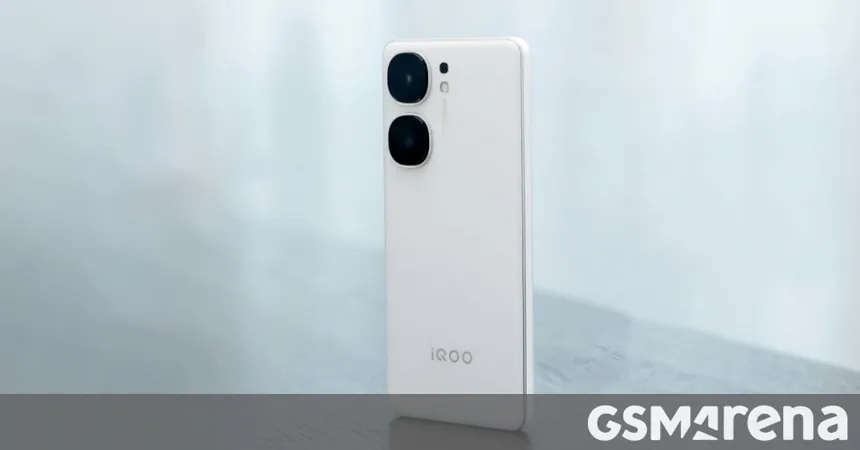
ETH Zürich’s Revolutionary Hybrid Qubit: A Blend of Mechanical Engineering and Quantum Innovation
2024-11-18
Author: Jacques
Innovative Approach to Energy States
Traditional qubits have predominantly been formed from superconducting circuits, trapped ions, or photons, each type bound by the limitations of their architecture. For a long time, the design of a mechanical qubit was deemed impossible due to the harmonically even distribution of energy states in mechanical oscillators, making it challenging to isolate two states for qubit functionality—essentially the '0' and '1' of quantum information.
However, the ETH Zürich team ingeniously introduced a concept known as "anharmonicity." This breakthrough allows for a non-uniform energy spacing, enabling practical isolation of the two viable states in their hybrid mechanical qubit. By ingeniously melding the vibrational characteristics of mechanical systems with the precise control of superconducting circuits, they crafted a qubit that successfully demonstrated 60% fidelity—a commendable achievement, albeit still a far cry from the over 99% fidelity standard of conventional qubits.
Hybrid Design Details
Central to the hybrid mechanical qubit is a two-component design. The first component is a mechanical resonator constructed from aluminum nitride, affixed on a sapphire crystal. When electrically stimulated, this resonator can sustain vibrations that persist over millions of oscillations. The guiding pair is a superconducting qubit mounted atop the resonator structure, where the interaction between oscillating currents and mechanical vibrations allows for the qubit states to blend into a coherent system.
By fine-tuning the superconducting qubit’s frequency—to be intentionally misaligned with the mechanical oscillator—the team managed to disrupt uniform energy levels to successfully isolate the qubit states. This delicately balanced approach is a testament to the team's innovative problem-solving capabilities.
Future Prospects of Mechanical Qubits
While the current hybrid mechanical qubit might not outstrip its established counterparts in the race for premier quantum computing technology, its unique characteristics open new avenues for research. Notably, these mechanical systems could serve as highly sensitive devices for detecting gravitational forces—an area where conventional qubit designs may fall short.
ETH Zürich researchers are enthusiastic about future experiments, including attempts to demonstrate logical operations with multiple mechanical qubits. Success in this endeavor could significantly broaden our understanding of quantum mechanics, particularly in its relationship with gravitational phenomena.
A Nod to the Past, A Step Toward the Future
This groundbreaking invention is a revival of mechanical ingenuity, calling back to the nascent days of computational design, proving that sometimes, to advance technology, one must glance backward. The ETH Zürich team exemplifies the fusion of classical mechanical principles with modern quantum innovation, signifying ongoing evolution in quantum research.
As we continue to unwrap the mysteries of quantum systems, innovations like these highlight just how interconnected our technological past is with our exciting future in quantum computing. This research could very well be the catalyst that propels us further into an era where quantum mechanics plays a pivotal role in scientific advancement.









 Brasil (PT)
Brasil (PT)
 Canada (EN)
Canada (EN)
 Chile (ES)
Chile (ES)
 España (ES)
España (ES)
 France (FR)
France (FR)
 Hong Kong (EN)
Hong Kong (EN)
 Italia (IT)
Italia (IT)
 日本 (JA)
日本 (JA)
 Magyarország (HU)
Magyarország (HU)
 Norge (NO)
Norge (NO)
 Polska (PL)
Polska (PL)
 Schweiz (DE)
Schweiz (DE)
 Singapore (EN)
Singapore (EN)
 Sverige (SV)
Sverige (SV)
 Suomi (FI)
Suomi (FI)
 Türkiye (TR)
Türkiye (TR)